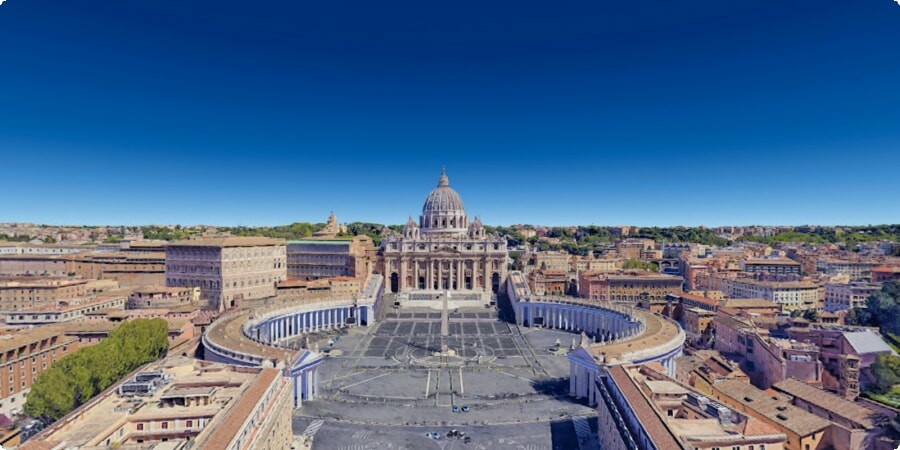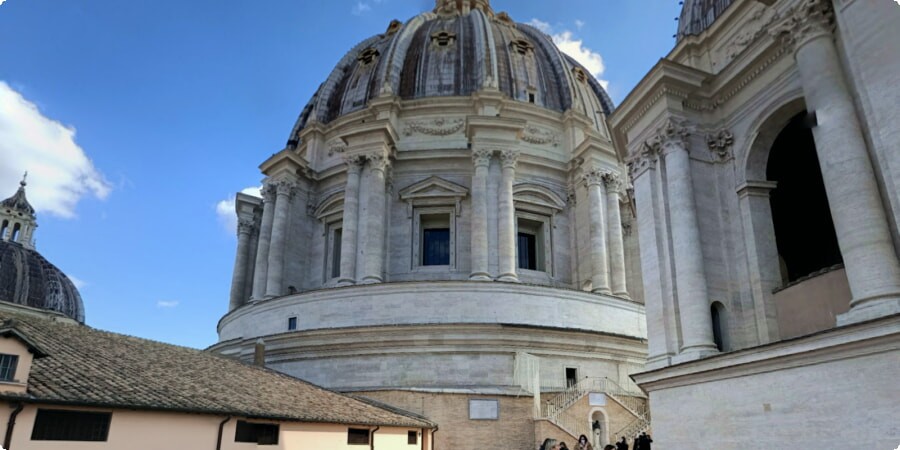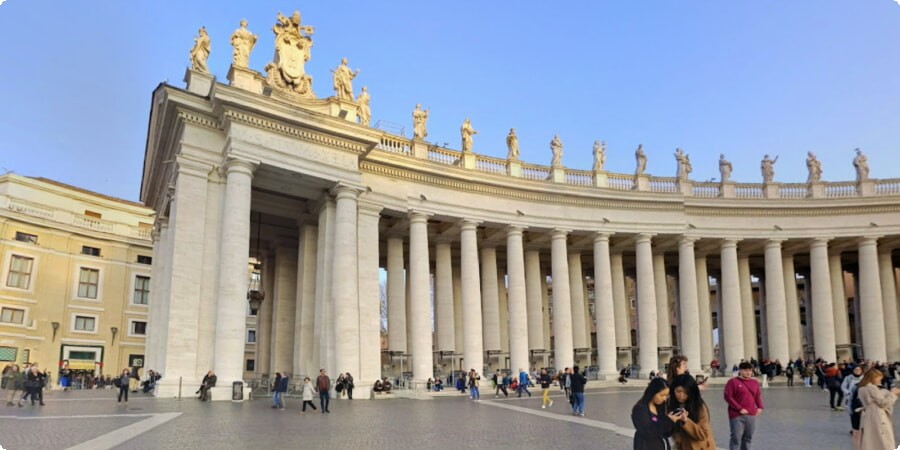Exploring the Iconic Dome of St. Peter’s Basilica
St. Peter’s Basilica, located in the heart of Vatican City, is one of the most renowned and breathtaking landmarks in the world. Its iconic dome, designed by the legendary Michelangelo, stands as a symbol of architectural brilliance and spiritual significance. This majestic structure not only dominates the skyline of Rome but also draws millions of visitors each year who come to marvel at its grandeur and delve into its rich history.
Historical Background: The Vision of Michelangelo
The story of St. Peter’s Basilica's dome is a tale of vision, perseverance, and artistic genius. Michelangelo, one of the greatest artists of the Renaissance, was entrusted with the monumental task of designing the dome in 1547. Although the project faced numerous challenges, including the death of Michelangelo before its completion, his vision remained the guiding force behind its construction.
Michelangelo’s design was inspired by the Pantheon, and he aimed to create a dome that symbolized the heavens themselves. The construction spanned several decades, with various architects contributing to its completion. The dome was finally finished in 1590 under the supervision of Giacomo della Porta and Domenico Fontana, staying true to Michelangelo’s original design .
Architectural Features and Design
The dome of St. Peter’s Basilica is an engineering marvel and a masterpiece of Renaissance architecture. Standing at a height of 136.57 meters (448.1 feet) from the base to the top of the cross, it is the tallest dome in the world. The internal diameter of the dome is 42 meters (137.8 feet), making it a colossal structure that commands awe and admiration.
The dome consists of two shells: an inner and an outer shell, which not only add to its strength but also enhance its aesthetic appeal. The intricate patterns of the ribs and the harmonious proportions reflect the meticulous planning and craftsmanship that went into its creation. The lantern at the top of the dome allows natural light to flood the interior, illuminating the magnificent mosaics and frescoes that adorn its surface.
For visitors who wish to experience this architectural wonder up close, a climb to the top of the dome offers a unique perspective on its construction. From the narrow staircases to the breathtaking views of Rome from the summit, the journey is an adventure in itself. For those planning to explore this marvel, it is advisable to book a car at Fiumicino Airport via this link for a convenient and comfortable trip to Vatican City.

Climbing the Dome: An Unforgettable Experience
Ascending to the top of St. Peter's Basilica's dome is an unforgettable experience that offers breathtaking views and a unique perspective on this architectural masterpiece. The climb is not for the faint-hearted, as it involves 551 steps to reach the top. However, for those who prefer a less strenuous ascent, an elevator is available that takes visitors to the terrace level, reducing the climb to 320 steps.
The journey begins at the base of the dome, where visitors can admire the intricately detailed mosaics and frescoes that adorn the interior. As you make your way up the narrow, winding staircases, you'll encounter various points of interest, including the inner and outer domes' structure. The climb can be quite steep and narrow in some places, adding to the sense of adventure and anticipation.
Reaching the top, you'll be rewarded with panoramic views of Rome and Vatican City. The sight of the Eternal City's iconic landmarks, such as the Colosseum, the Pantheon, and the Tiber River, sprawling beneath you is nothing short of awe-inspiring. For a convenient trip to this historic site, consider booking a car in Italy through this link.

The Interior Art: Mosaics, Frescoes, and Sculptures
The interior of St. Peter's Basilica is a treasure trove of artistic masterpieces. The dome itself is adorned with stunning mosaics that depict various religious scenes and figures, showcasing the incredible skill and craftsmanship of Renaissance artists. The central mosaic, which features Christ the Redeemer, is a focal point that draws the eye upward, emphasizing the dome's celestial symbolism.
Below the dome, the basilica's interior continues to impress with its grandeur and beauty. The nave, with its soaring columns and intricately decorated ceiling, leads to the high altar, which is situated directly above the tomb of St. Peter. The baldachin, designed by Gian Lorenzo Bernini, is a magnificent bronze canopy that stands over the altar, adding to the basilica's opulent atmosphere.
The basilica also houses numerous sculptures, including Michelangelo's famous Pietà, located in the first chapel on the right as you enter. This exquisite marble sculpture depicts the Virgin Mary holding the body of Christ after his crucifixion and is considered one of Michelangelo's greatest works. Visitors can spend hours exploring the basilica's interior, each corner revealing another masterpiece of art and architecture.

The Impact of St. Peter's Dome on Rome's Skyline
St. Peter's Basilica's dome has had a profound impact on Rome's skyline and remains a defining feature of the city's architectural landscape. Its towering presence can be seen from various vantage points throughout Rome, symbolizing the heart of the Catholic Church and the city's rich historical and cultural heritage.
The dome's design has influenced numerous other structures, both in Rome and around the world. Its harmonious proportions and innovative engineering techniques have inspired architects for centuries, making it a benchmark for dome construction. The combination of beauty, strength, and ingenuity found in St. Peter's dome continues to captivate and inspire visitors and architects alike.
One of the best places to appreciate the dome's impact on Rome's skyline is from the Janiculum Hill, which offers a panoramic view of the city. Here, the dome stands out prominently, a testament to the genius of Michelangelo and the enduring legacy of Renaissance architecture. For those planning a visit, booking a car in Italy via this link can provide a convenient way to explore the city's many historical and architectural wonders.
The Historical Significance of St. Peter’s Basilica
St. Peter’s Basilica is more than just an architectural marvel; it is a profound symbol of the Catholic Church and a pivotal landmark in the history of Rome. The basilica stands on the site traditionally believed to be the burial place of St. Peter, one of Jesus' apostles and the first Pope. This sacred location has been a center of Christian pilgrimage for centuries, drawing visitors from around the world.
The current basilica, constructed between 1506 and 1626, was built over an earlier church commissioned by Emperor Constantine in the 4th century. The decision to rebuild the basilica was driven by both the desire to accommodate a growing number of pilgrims and to reflect the grandeur of the Church. The Renaissance architects, including Bramante, Michelangelo, and Bernini, each contributed their vision, resulting in the magnificent structure we see today.
The significance of St. Peter's Basilica extends beyond its religious importance; it represents a fusion of art, history, and culture that has shaped Rome's identity. It has been the site of numerous significant events, including papal coronations and the funerals of prominent figures, solidifying its role in both religious and secular history.

The Influence of Renaissance and Baroque Art
The architectural and artistic design of St. Peter’s Basilica reflects the evolution of Renaissance and Baroque art. The basilica's design began with Donato Bramante's vision, which introduced a centralized plan with a massive dome, an innovative concept that set the stage for the Renaissance.
Michelangelo, who took over the project later, made significant contributions, refining the design of the dome to achieve its iconic profile. His work on the dome remains one of the greatest achievements in architectural history, showcasing his mastery of proportion and spatial design.
In the Baroque period, Gian Lorenzo Bernini's influence became evident with his creation of the grandiose Baldachin over the high altar. Bernini’s work in the basilica is a prime example of Baroque artistry, characterized by dramatic expression and grandeur. His design of St. Peter's Square, with its colonnades embracing visitors, further underscores the Baroque emphasis on dynamic space and viewer engagement.
Visiting Practicalities and Tips
When planning a visit to St. Peter’s Basilica, it's essential to consider a few practical tips to make the experience as enjoyable as possible. The basilica is open to visitors daily, but it's wise to check the official website for any changes in opening hours or special events that might affect your visit.
Dress code is an important consideration; visitors are required to dress modestly, covering shoulders and knees, in keeping with the basilica's sacred nature. There is usually a security check at the entrance, so allow some extra time for this.
To make the most of your visit, consider joining a guided tour. Tours provide valuable insights into the basilica’s history, art, and architecture, enriching your experience. For those interested in exploring other parts of Rome, booking a car through this link can offer flexibility and ease in navigating the city's historical sites and attractions.
For a unique perspective, visiting the basilica early in the morning or later in the afternoon can help you avoid the busiest times, allowing for a more serene experience of this extraordinary landmark.